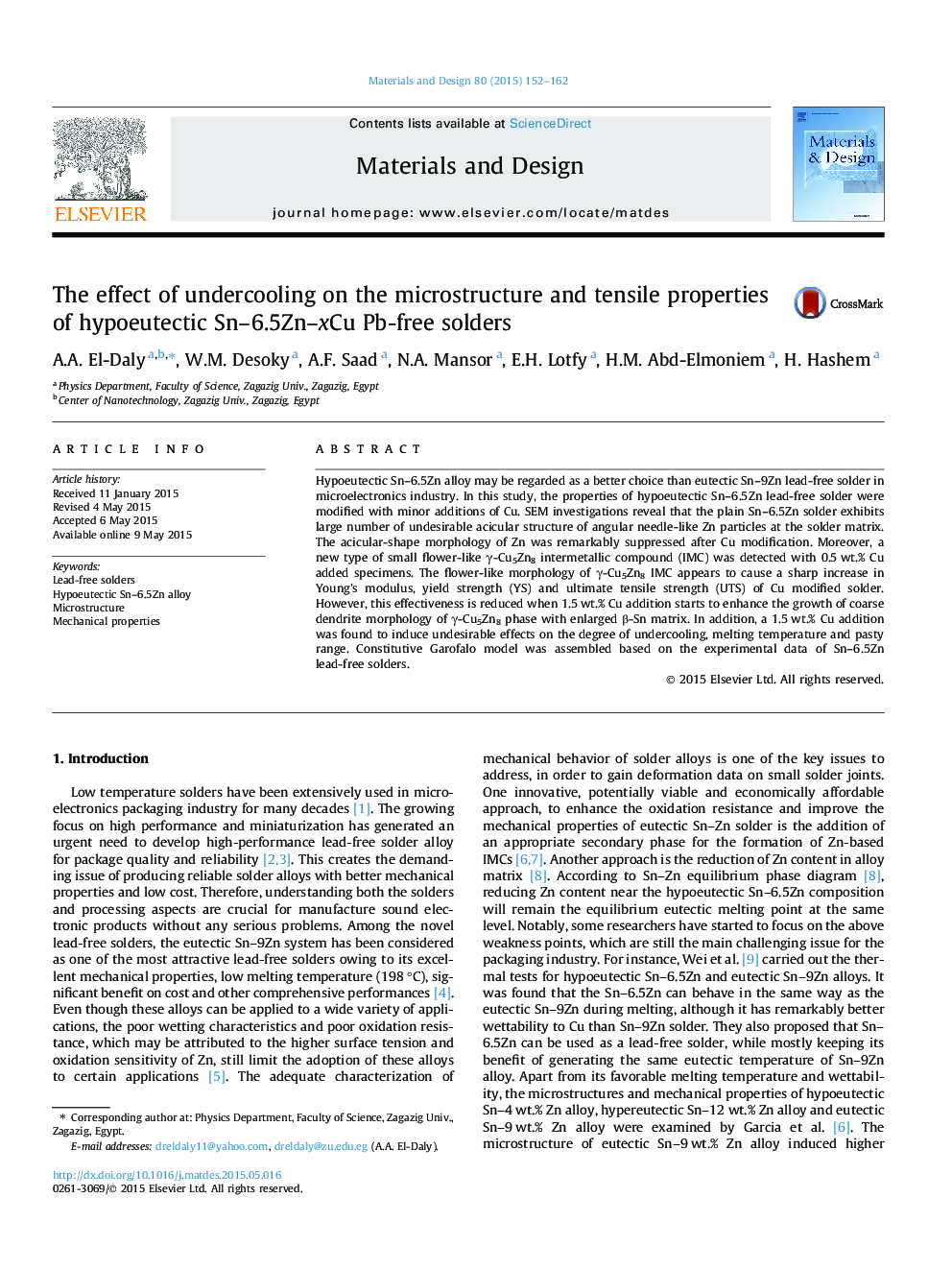| Article ID | Journal | Published Year | Pages | File Type |
|---|---|---|---|---|
| 828540 | Materials & Design (1980-2015) | 2015 | 11 Pages |
•Small amounts of Cu have been added into Sn–6.5Zn solder alloy.•A new type of flower-like γ-Cu5Zn8 IMC was detected with Cu addition.•The shape and size of flower-like IMCs control the overall Sn–6.5Zn properties.•Optimal percentage of Cu was 0.5% Cu to enhance the overall properties.•1.5% Cu addition induced undesirable effects on Sn–6.5Zn properties.
Hypoeutectic Sn–6.5Zn alloy may be regarded as a better choice than eutectic Sn–9Zn lead-free solder in microelectronics industry. In this study, the properties of hypoeutectic Sn–6.5Zn lead-free solder were modified with minor additions of Cu. SEM investigations reveal that the plain Sn–6.5Zn solder exhibits large number of undesirable acicular structure of angular needle-like Zn particles at the solder matrix. The acicular-shape morphology of Zn was remarkably suppressed after Cu modification. Moreover, a new type of small flower-like γ-Cu5Zn8 intermetallic compound (IMC) was detected with 0.5 wt.% Cu added specimens. The flower-like morphology of γ-Cu5Zn8 IMC appears to cause a sharp increase in Young’s modulus, yield strength (YS) and ultimate tensile strength (UTS) of Cu modified solder. However, this effectiveness is reduced when 1.5 wt.% Cu addition starts to enhance the growth of coarse dendrite morphology of γ-Cu5Zn8 phase with enlarged β-Sn matrix. In addition, a 1.5 wt.% Cu addition was found to induce undesirable effects on the degree of undercooling, melting temperature and pasty range. Constitutive Garofalo model was assembled based on the experimental data of Sn–6.5Zn lead-free solders.
Graphical abstractFigure optionsDownload full-size imageDownload as PowerPoint slide
